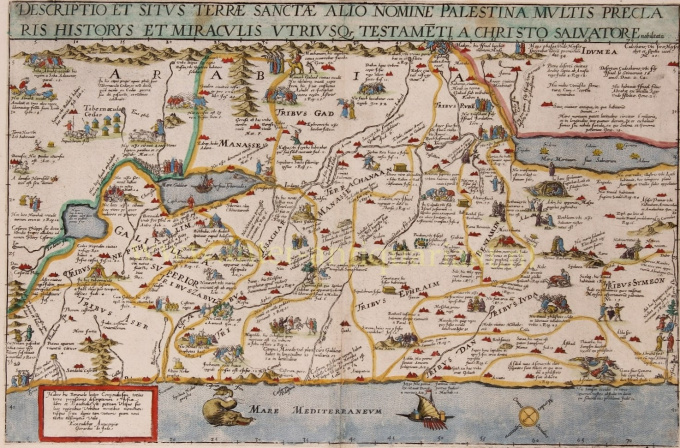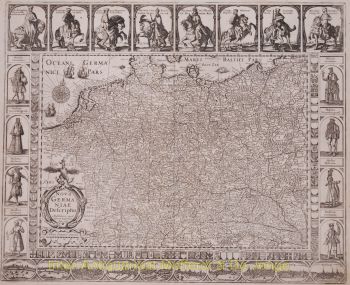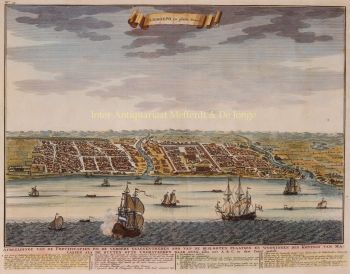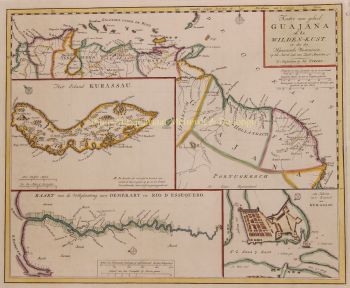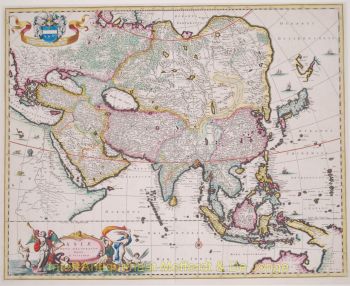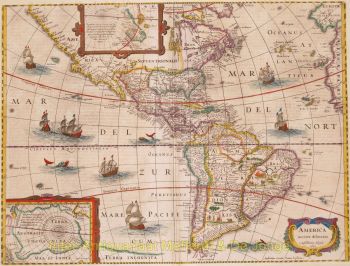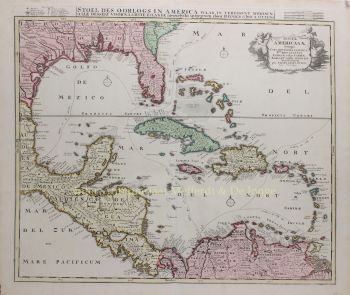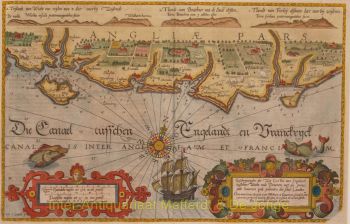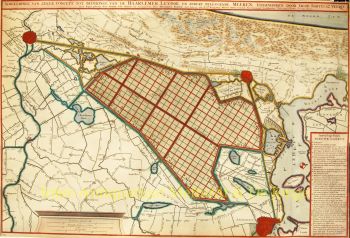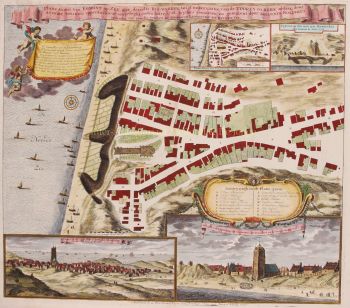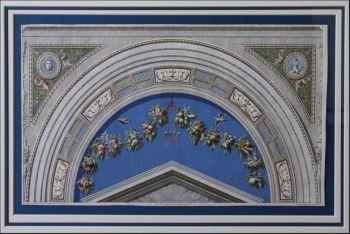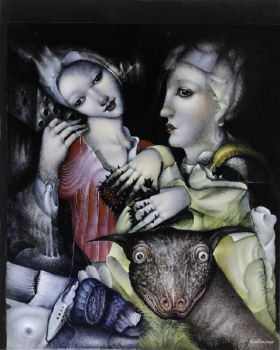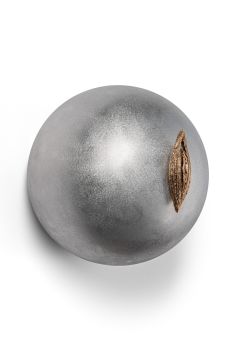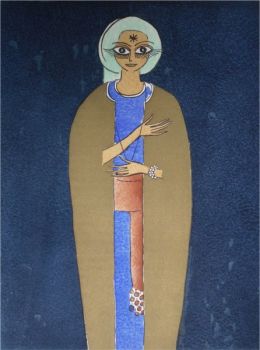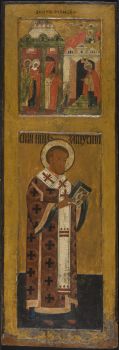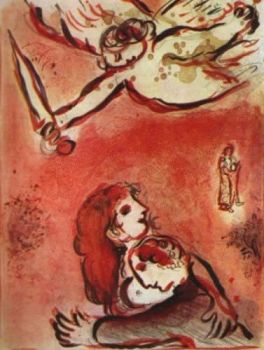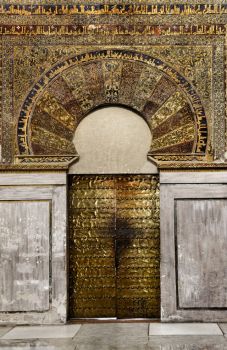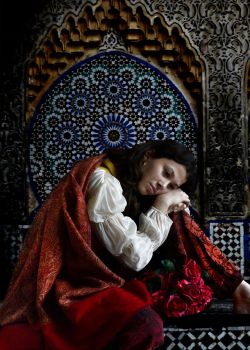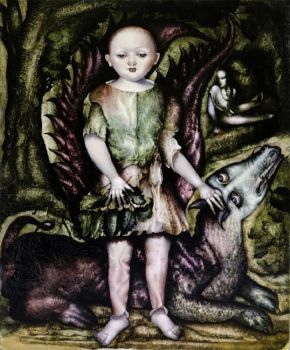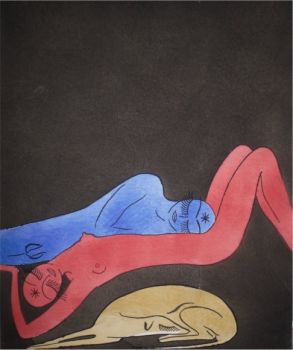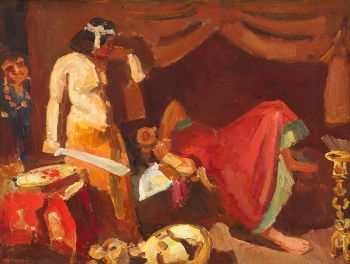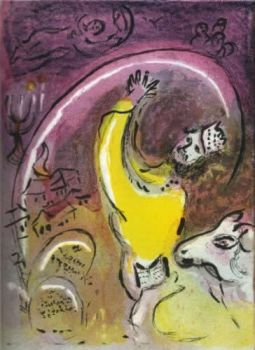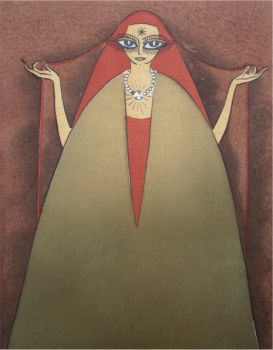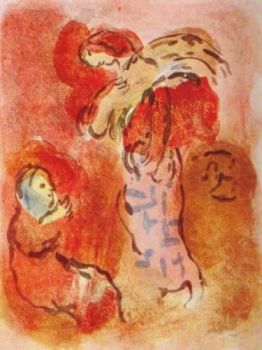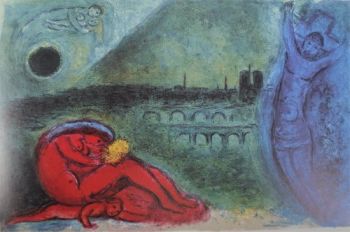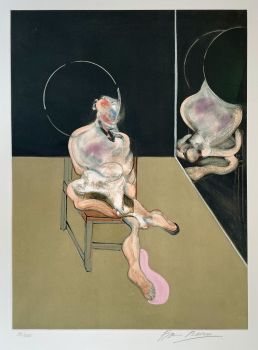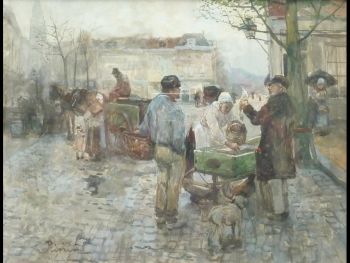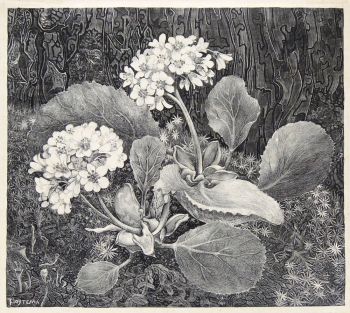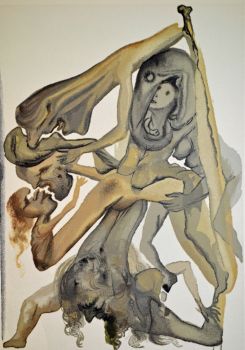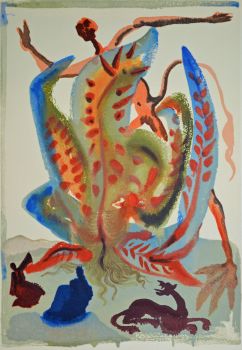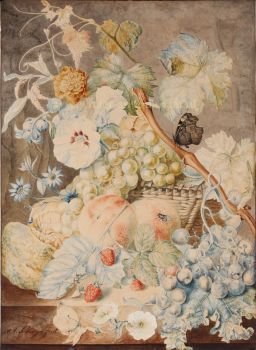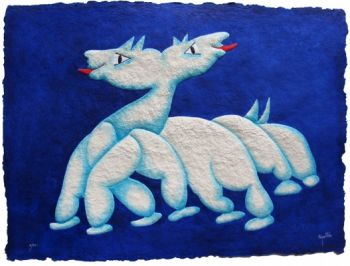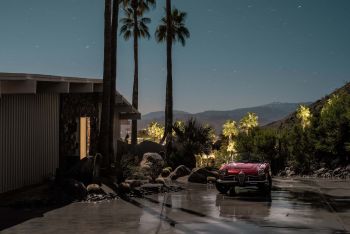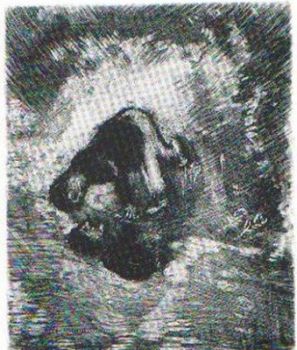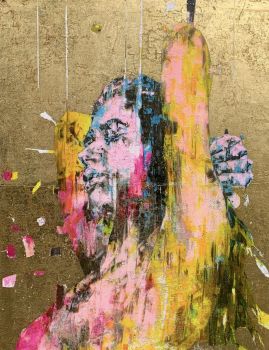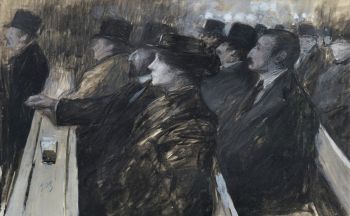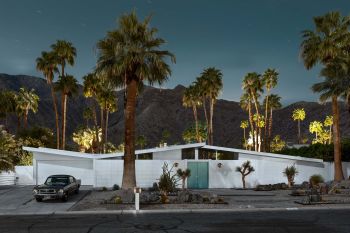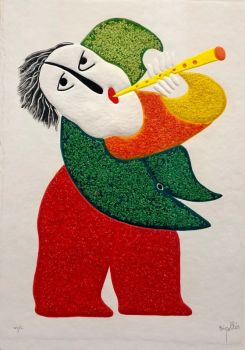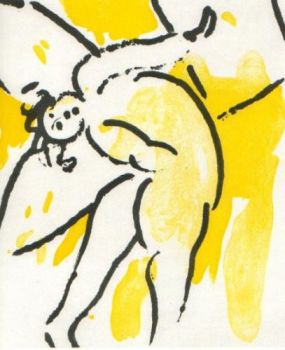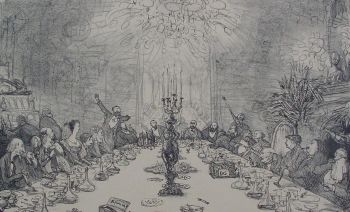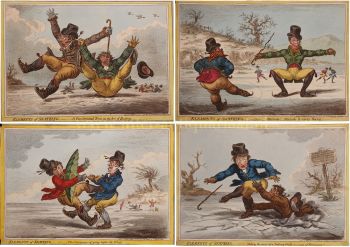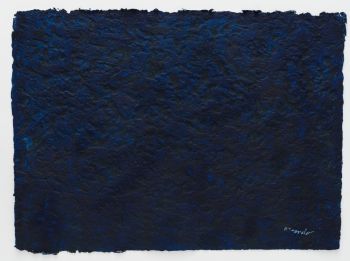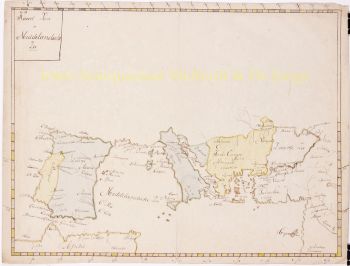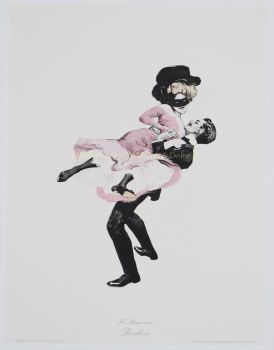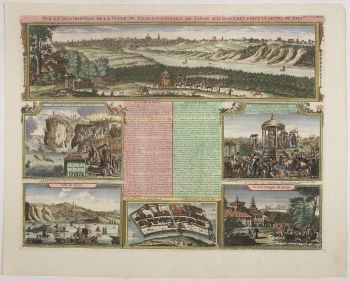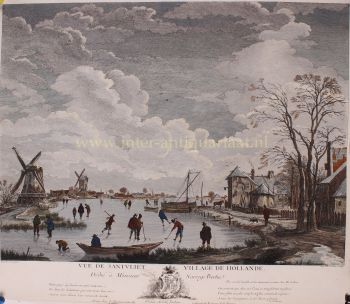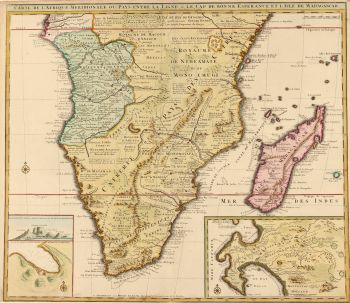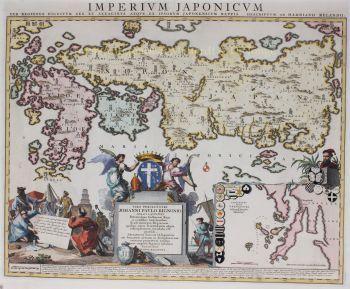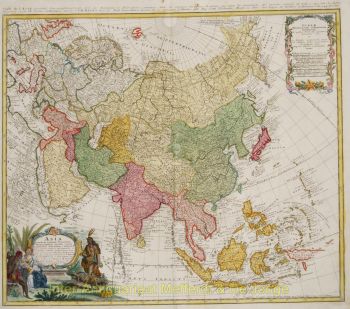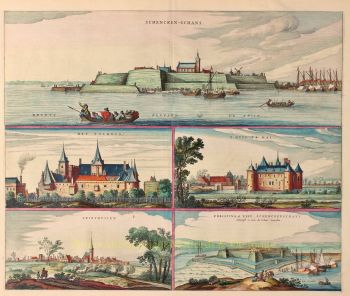Old map of the Holy Land 1593
Gerard and Cornelis de Jode
Inter-Antiquariaat Mefferdt & De Jonge
- Über Kunstwerk16TH CENTURY PICTORAL MAP OF THE HOLY LAND “Descriptio et Situs Terrae Sanctae alio Nomine Palestina, Multis Preclaris Historys et Miraculis utriusque testamenti a Christo Salvatore nobilitata.” [The description and location of the Holy Land also called Palestine, famed for the many illustrious histories and miracles of both Testaments by Christ the Saviour.] Copper engraving published in 1593 by Gerard and Cornelis de Jode in the “Speculum Orbis Terrarum”. Coloured by a later hand. Size: 33,9 x 51,4 cm. The map shows the Holy Land oriented to the east, with its coastline from Tyrus to Gaza. The events of the Bible are depicted in words and illustrations. It locates the Twelve Tribes, the descendants of the biblical patriarch Jacob, who collectively form the Israelite nation. Gerard de Jode states in the tekst box in the lower left: Here you find, good reader, a compendious description of the entire land of promise from the book of Joshua and Ezekiel, indicating the regions, cities, mountains, and monuments worthy of being known, both old and new. The De Jode family (Gerardus, the father, and Cornelis, the son) from Antwerp, had the misfortune of attempting to compete in the atlas market with the formidable and well-connected Abraham Ortelius. The De Jodes were and are respected as mapmakers, as evidenced by this work based on then current sources, but they were no commercial match for Ortelius. They published a mere two editions of their atlas as opposed to approximately 40 by Ortelius. Hence, the considerable rarity of De Jode maps in today’s market. This map of the Holy land appeared in only the second edition of De Jode’s atlas, and is consequently even rarer. Price: Euro 3.750,-
- Über Künstler
Cornelis de Jode (Antwerpen, 1568 – Bergen, 1600) war ein südniederländischer Kartograf, Kupferstecher und Drucker. Cornelis war ein Sohn von Gérard de Jode.
Er hatte sich durch Studium auf seine Aufgabe vorbereitet und sich als Plaetsnyder und Verleger profiliert. De Jode hatte bald Erfolg: Die zweite Auflage des Weltatlas Speculum Orbis Terrarum ('Spiegel der Länder der Welt') von seinem Vater Gerard, jetzt umbenannt in Speculum Orbis Terrae ('Spiegel des Weltlandes'), verbesserte und von 65 auf 109 Karten vergrößert, erschien 1593 und verkaufte sich viel besser als die erste. 1595 trat Cornelis der Antwerpener Lukasgilde bei.
De Jode schrieb auch De Quadrante Geometrico Libellus (1594), „Buch über den geometrischen Quadranten“. Laut seinem Epitaph war Cornelis einer der eher seltenen Kartographen, die viel gereist waren: nach Norwegen, Dänemark, Island, Italien und Spanien.
Ein früher Tod beendete seine vielversprechende Karriere. Die Kupferplatten gelangten in den Besitz des Verlegers J.B. Vrients, die auch die Teller von Ortelius gekauft haben. Es sind jedoch keine ähnlichen Atlasausgaben von Vrients bekannt, nur eine Neuauflage der Pool-Karte von 1618.
Sind Sie daran interessiert, dieses Kunstwerk zu kaufen?
Artwork details
Related artworks
- 1 - 4 / 24
- 1 - 4 / 24
- 1 - 4 / 24
- 1 - 4 / 12

